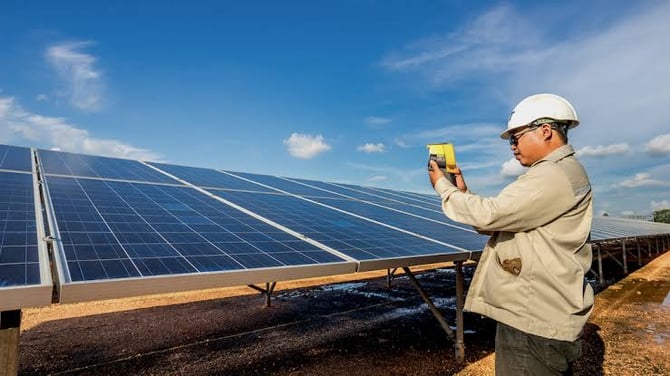Solar Energy Surges as Big Tech Seeks Clean Energy

Solar energy use in the U.S. is rapidly expanding, outpacing all other electricity sources amid rising power demand. Despite criticism from the fossil fuel industry, which argues that renewables still make up a small portion of total power generation, solar now constitutes 3.9% of the U.S. energy mix compared to natural gas at 43%.
The solar sector faces logistical challenges, such as integrating with an aging power grid, but leaders in clean energy believe a significant turning point is near. This optimism is fueled by increasing demand from major tech firms like Amazon and Microsoft, which are committed to powering their data centers with clean energy.
These companies accounted for 40% of the demand for large solar projects in the past five years, with expectations for further growth as artificial intelligence and other technologies drive up electricity needs.
In 2024, solar is expected to account for 58% of new electricity generation in the U.S., with a record 36 gigawatts set to be added to the grid, nearly doubling last year's increase. Battery storage capacity is also projected to more than double to 14.3 gigawatts.
What Does This Mean For Me?
Despite challenges, such as the slow pace of connecting renewable projects to the grid and the need for significant investments in battery technology, the future of solar looks bright. The decreasing cost of solar modules and batteries, supported by incentives from policies like the Inflation Reduction Act, has made solar a cost-competitive option even compared to other power forms
More News
.webp)
Japan’s Rate Shift Is Rippling Through Global Bond Markets
6 days ago

China’s Growth Engine Stalls as Consumers and Investors Pull Back
1 week ago

Egypt’s Recovery Gains Traction as Household Pressure Lingers
2 weeks ago

OECD Warns AI and Tariffs Will Test the Global Economy
3 weeks ago

Zero Tariffs, Higher Drug Bills as US and UK Reset Pharma Trade
3 weeks ago

Catastrophe Bonds Go Global as Climate Risk Meets Yield Hunting
3 weeks ago
.webp)
Canada Shields Steel and Lumber Industries From Tariffs
4 weeks ago

Trump Drops Selected Tariffs in Response to Inflation Pressures
1 month ago